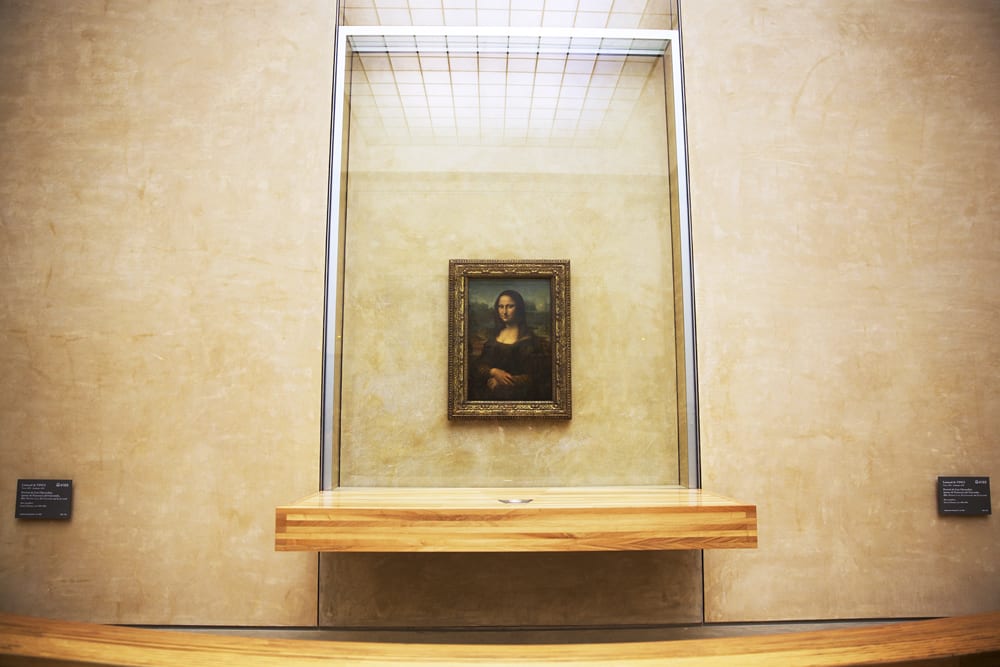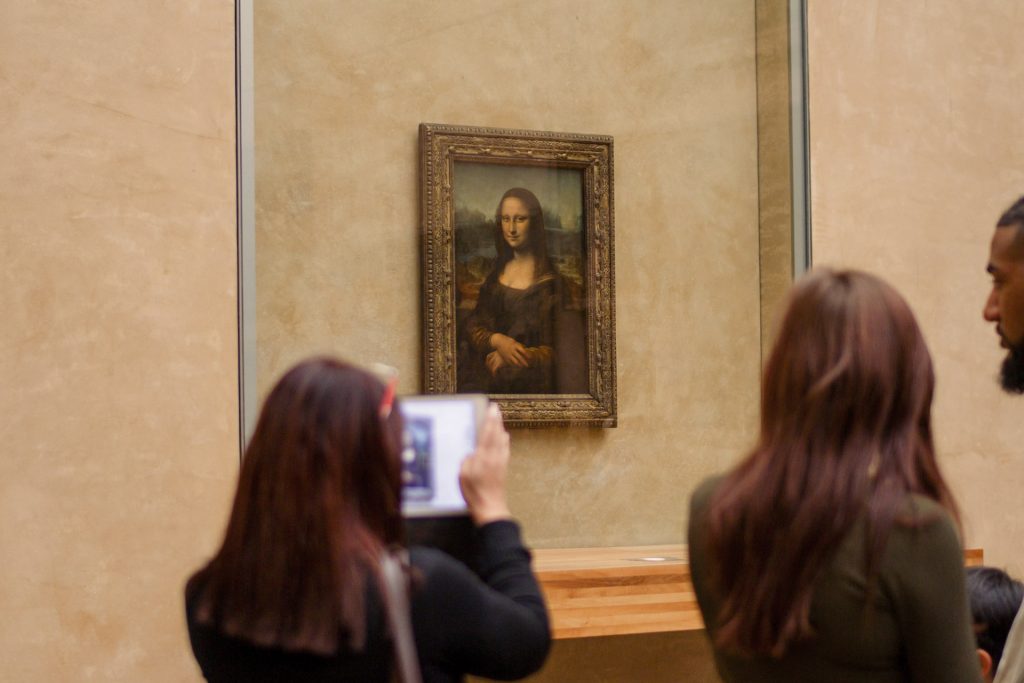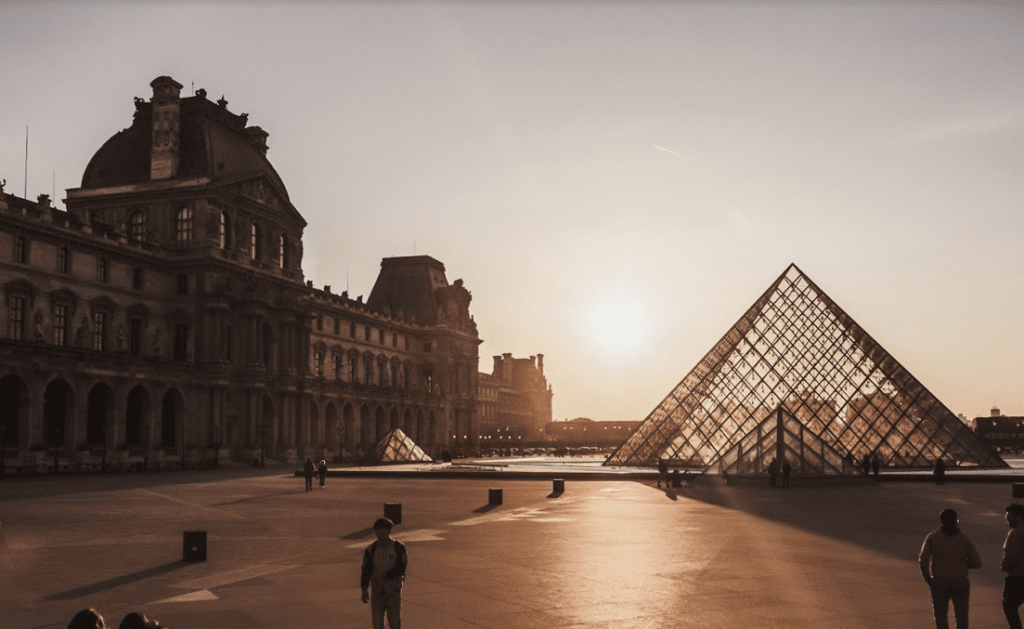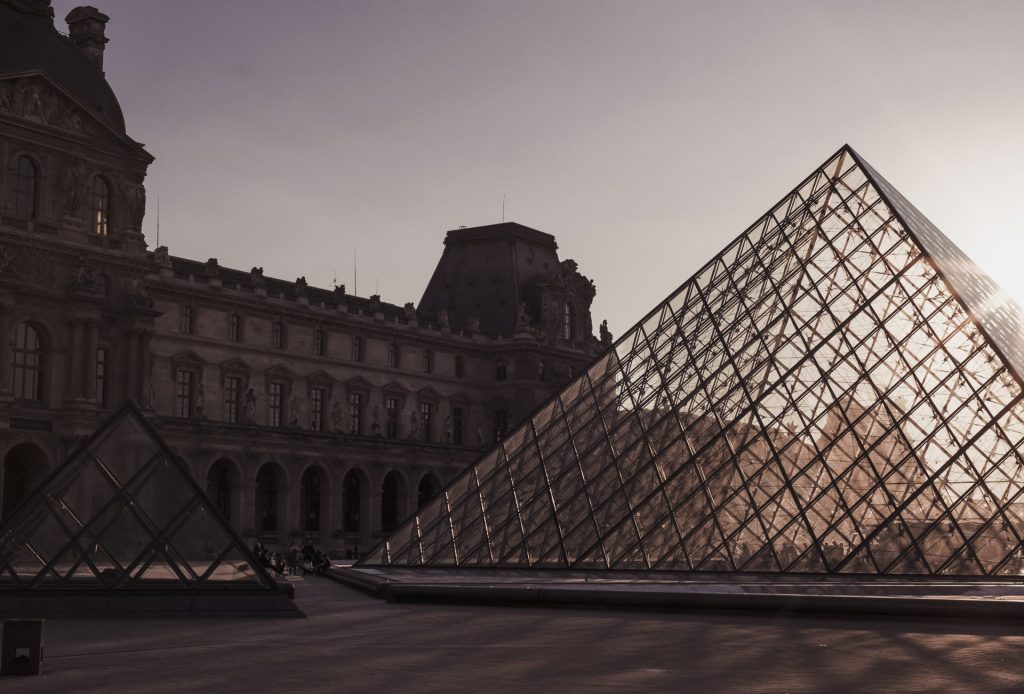Every day, tens of thousands of people wait in line at the Louvre for a moment with the Mona Lisa. And every day, tens of thousands of people commit her iconic smile to memory, save it to their camera roll, or share it on social media. For many, they secure museum tickets in advance as part of the experience, ensuring a smoother entry to one of the most famous Paris attractions. The journey into the Louvre often begins at the striking Louvre Pyramid, where visitors gather from around the globe to witness the very heart of Renaissance art and immerse themselves in centuries of art history.
In summer 2019, however, this endeavor became somewhat trickier when the museum decided to move Da Vinci’s famous masterpiece into the Medici Gallery—marking the first time staff relocated it in 14 years. This moved Mona Lisa became the central attraction in its new temporary home, drawing crowds who were eager to see not only the iconic portrait, but also the unique context provided by the Medici Gallery. For many visitors, tracking down the moved Mona Lisa became an unexpected adventure within the labyrinthine halls of the Louvre.

The Louvre Museum has a world-renowned collection of paintings, including the iconic Mona Lisa, Liberty Leading the People, and The Raft of the Medusa, among numerous others.
When will the Mona Lisa go back to its original location?
The Mona Lisa found itself at the epicenter of a publicity storm in July 2019, after staff moved it from the Louvre’s Salle des États to its Galerie Médicis. They did this simply to facilitate the former’s renovation ahead of an exhibition in honour of the 500th anniversary of Da Vinci’s death in October.
Since July, headlines have documented the confusion the move caused among visitors to The Louvre, which welcomes an average of 30,000 guests a day. Consequently, the Mona Lisa is set to return to its original spot in mid-October. As crowds jostle today to get a glimpse at what many consider the world’s most enigmatic smile, onlookers remember that Mona Lisa’s serene expression belies the drama which has surrounded her for centuries. The moved Mona Lisa became a symbol of both the painting’s enduring allure and the practical challenges of preserving a masterpiece amid ongoing museum renovations.
Indeed, this isn’t the first time the painting’s relocation has caused a bit of a ruckus. In fact, this summer’s move calls to mind an interesting dispute over ownership, which has played out between two nations for years.
Read more: The Top 13 Things to See at The Louvre

Who owns the Mona Lisa?
From a legal standpoint, the French government owns the Mona Lisa. Figuratively, however, the answer actually depends on who you ask—and on which side of the French/Italian border they might stand.
Notably, the Mona Lisa is:
- A portrait of an Italian woman named Lisa Gherardini, commissioned by her husband Francesco del Giocondo during the Italian Renaissance
- Painted by Da Vinci, who was born in Italy but died in France 67 years later
- Supposedly gifted by Da Vinci to his friend King Francois I, who initially housed the portrait in the Palace of Versailles before moving it to the Louvre
Therefore, the cultural conundrum persists. Many assert that this confirms France’s ownership—especially since the Louvre stated that Da Vinci sold the painting to the king. However, those who share a birthplace with Da Vinci argue that the Mona Lisa remains an undeniable part of Italian history, created by an Italian for an Italian.
Given the global realm to which the painting has been elevated, the issue of heritage may seem trivial. Nevertheless, it actually motivated one of the most infamous art robberies of the 20th century.
Read more: 7 Things You Never Knew About the Eiffel Tower

The Mona Lisa heist
In August 1911, Vincenzo Peruggio, an Italian man, stole the half-length portrait from the Louvre. After he concealed the painting in his Parisian home for two years, he returned to Italy with it, approached a gallery in Florence, and promptly blew his cover.
After two years of police work and considerable international publicity, the hunt for the painting ended. The court brought Peruggio forward, and he reportedly argued that the motivation for his crime was patriotic. He subsequently served seven months of a 12-month sentence.
Now, over 100 years on from Peruggio’s ‘crime of patriotism’, the debate over who can claim ownership of the painting continues to rumble on.
Read more: Why You Need to Take a Conciergerie Tour in Paris

The Louvre Pyramid
From courtrooms to cultural campaigns
While the original dispute played out in a courtroom, today’s manifestation of the conflict appears in cultural campaigns and online spats.
For example, in 2011, The Telegraph reported on art historian Silvano Vinceti’s efforts to raise 100,000 signatures by 2013 in support of the return of the painting to Italy. The campaign failed, as Vincent Pomarede of the Louvre argued that “any attempt to move the painting would cause incalculable damage.”
One year later, a petition containing more than 150,000 signatures called on the Louvre to return the Mona Lisa to Florence, aiming to reinstate the painting in the Uffizi Gallery. The National Committee for Historical, Cultural and Environmental Heritage made a formal—but ultimately unsuccessful—request to France’s Culture Minister at the time.
Cultural campaigns and pop culture continue to reignite this debate. For instance:
- George Clooney, during a 2014 promotional tour for his film The Monuments Men, encouraged France to return the portrait to Italy, which drew further attention to the friction between the two nations.
- In 2018, the Louvre tweeted a photoshopped image of the Mona Lisa wearing the French football strip after France’s World Cup win, which sparked outrage among Italian fans.
Naturally, alternative versions of the image quickly began circulating online, with irate Italians editing the painting to illustrate Mona Lisa’s supposed support of the Italian football team.

People from all over the world visit the Mona Lisa, and during the period of the moved Mona Lisa, the painting’s new placement became a trending topic, sparking both curiosity and debate. For some, the journey to find the moved Mona Lisa inside the Medici Gallery was an unforgettable twist in their Louvre visit, while for others, it raised questions about how the movement of masterpieces shapes our understanding of art and heritage.
The latest Mona Lisa relocation
Courtrooms, campaigns, and Clooney aside, the most recent relocation has stirred up further contention.
Indeed, a recent article in The Irish Times reminds us that—for many people—the heritage issue still runs deep. One Italian visitor asserted: “They stole her. She should be in Florence! It’s not right we have to pay to see our history.”
A security guard countered, “Leonardo gave her to Francois, so she’s French now.”
So, is the Mona Lisa now woven into the fabric of French national heritage or does she remain inextricably linked with Italian culture? Which country can lay claim: the one in which she was created or the one in which she resides?
While the Mona Lisa will soon return to the Salle des États, many maintain her relocation should be an international one. The saga of the moved Mona Lisa leaves a lasting impression, reminding us that even the world’s most celebrated artworks are subject to change, both in location and in meaning. As the debate continues, the tale of the moved Mona Lisa adds yet another intriguing chapter to the painting’s extraordinary story.
So, where do you stand on it? Let us know in the comments below!

The Eiffel Tower was built as the entrance arch to the 1889 World’s Fair.
FAQ: Visiting the Mona Lisa and the Louvre
How do I buy museum tickets to see the Mona Lisa?
You can purchase museum tickets to the Louvre online via the Louvre’s official website or at the entrance. Booking in advance is highly recommended, especially during peak seasons, to avoid long waits at the Louvre Pyramid and ensure you’ll have time to enjoy the museum’s top Paris attractions, including the Mona Lisa.
Where inside the Louvre is the Mona Lisa displayed?
The Mona Lisa is typically exhibited in the Salle des États, which is one of the largest rooms in the Louvre and a highlight for fans of Renaissance art. Temporary relocations, such as the move to the Medici Gallery in 2019, are rare and usually related to renovations or special exhibitions. If you were one of the lucky visitors during the period of the moved Mona Lisa, you experienced a rare moment in Louvre history.
What is the best time to visit the Louvre for a less crowded experience?
To avoid the largest crowds, visit the Louvre early in the morning or during late evening hours on days when the museum offers extended opening times. Weekdays outside of school holidays also tend to be quieter, giving you more space and time to appreciate masterpieces and explore the rich art history of the museum.
Is the Louvre Pyramid the main entrance for all visitors?
Yes, the Louvre Pyramid is the most iconic and commonly used entrance for visitors. It’s especially popular among first-timers and those seeking photos, but alternative entrances may be available during busy periods or for ticket holders with special access.
Why is the Mona Lisa considered so important in art history?
The Mona Lisa captivates art lovers for several reasons:
- Leonardo da Vinci painted the portrait using masterful technique, blending realism with subtle, enigmatic expression.
- The painting’s pivotal role in Renaissance art has influenced generations of artists.
- It remains one of the world’s most recognizable and studied works of art.
PSST! Navigating the Louvre can be difficult. If you want to see the best of the collection, check out our Louvre Highlights Tour—featuring the aforementioned Mona Lisa, Venus de Milo, and Winged Victory.



